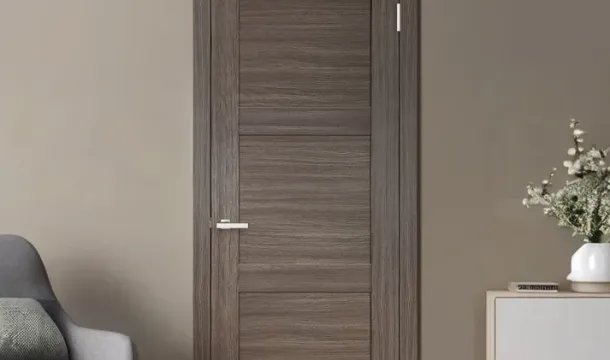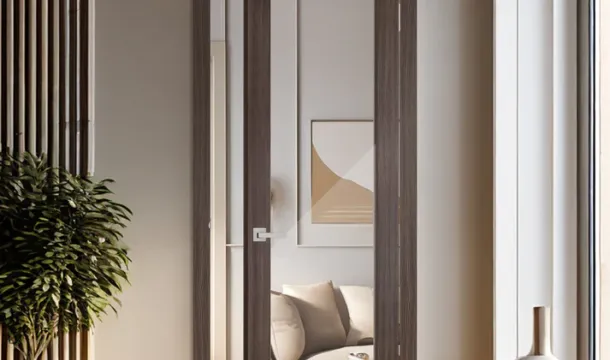Integration of smart locks with interior door systems explained
Popular Articles
Selecting compatible smart locks for interior doors requires attention to lock type, door material, and wiring options. Deadbolt-style smart locks designed for exterior use often need adaptation to fit standard interior doors, which typically have thinner profiles and different latch mechanisms. Prioritize models explicitly supporting interior applications or those offering adjustable backsets between 2-3/8" and 2-3/4". This ensures smooth installation without compromising door integrity.
Wired versus wireless smart lock connections impact both functionality and aesthetics. Wireless locks powered by batteries reduce installation complexity but demand regular maintenance. Hardwired solutions provide continuous power and integration with home automation hubs but may require professional electrical work, especially when retrofitting existing interiors. Evaluate your home's infrastructure before choosing the connection type.
Mounting considerations are equally important. Interior doors often feature thinner frames and lighter materials such as hollow core or MDF, which can limit the types of locking hardware supported. Reinforcing the door or frame around the lock area enhances durability and security without detracting from design elements. Using mounting plates or strike reinforcements designed for smart locks maintains both function and finish quality.
Compatibility Requirements for Smart Locks
Ensure the door thickness matches the smart lock specifications, typically between 35mm and 55mm. Interior doors outside this range may require adapter kits or different lock models to guarantee secure installation and proper operation.
Check backset measurementsthe distance from the door edge to the center of the lock holecommonly 60mm or 70mm for interior doors. Selecting a smart lock compatible with your door's backset avoids misalignment issues and mechanical failures.
Confirm that the door material supports electronic hardware. Solid wood and metal doors provide stable mounting surfaces, while hollow-core doors might need reinforcement plates to handle the weight and mechanical stress of smart locks without compromising integrity.
Electrical and Connectivity Standards
Smart locks requiring batteries or wired power must have accessible compartments or wiring channels within the door frame. Evaluate whether your interior door design can accommodate these elements without visible modifications.
Wireless protocols like Bluetooth, Wi-Fi, or Z-Wave demand minimal interference within wall structures. Doors with metal cores or thick frames might reduce signal strength; choose locks with repeaters or mesh network compatibility accordingly.
Lock Type and Strike Plate Compatibility
Match the latch type (deadbolt, tubular latch) and strike plate dimensions with your chosen smart lock. Many interior doors use standard latches but verify alignment to avoid retrofitting that affects door function or aesthetics.
Consider lever handle orientation (left- or right-handed) since some smart locks are handed. Selecting reversible models increases compatibility across diverse interior door designs common in Canadian homes.
Installation Steps for Interior Doors
Ensure the door frame is square and plumb before proceeding. Measure the rough opening to confirm it exceeds the door slab dimensions by at least 1/2 inch on all sides, allowing space for shimming and insulation.
Position the door frame inside the opening and use level tools to align it vertically and horizontally. Insert shims strategically behind hinges and along the strike plate side to maintain consistent gaps between the door and frame, typically 1/8 inch on hinge side and 3/16 inch on top and latch side.
Mounting Door Hardware
Pre-drill holes for hinges using a template or existing markings from the door slab. Attach hinges securely with screws long enough to penetrate framing studs (minimum 3 inches). Hang the door temporarily to check swing clearance, then adjust shim placement if necessary.
Install locksets or smart lock mounting plates according to manufacturer specifications. Verify that latch bolts extend smoothly into strike plates without binding by testing multiple open-close cycles before final tightening.
Final Adjustments and Finishing
Trim excess shim material flush with framing after securing the frame. Apply low-expansion foam insulation around the perimeter of the jamb to improve soundproofing and thermal performance without warping wood components.
Caulk gaps between trim and wall surfaces for a clean finish. Check door operation one last time, ensuring even reveal around edges and smooth locking mechanism function before painting or staining.
Troubleshooting Common Integration Issues
If a smart lock fails to engage smoothly with an interior door, verify that the latch aligns precisely with the strike plate. Misalignment often causes jamming or incomplete locking. Adjust the strike plate height or reposition the lock mounting screws in increments of 12 mm to correct this.
Power interruptions frequently disrupt wireless communication between the smart lock and its hub. Check battery voltage using a multimeter; replace batteries below 3.0V immediately. For rechargeable models, ensure charging contacts are clean and free from corrosion.
Interference from metal reinforcements inside solid-core doors can weaken signal strength. Test connectivity by temporarily removing metallic components near the lock area or switching to a lower frequency protocol like Z-Wave Plus instead of Wi-Fi if available.
Firmware mismatches cause unresponsiveness or erratic behavior. Cross-reference the installed firmware version with manufacturer updates via their official app or website. Perform manual updates following exact model instructions to avoid bricking the device.
When programming user codes or integrating with home automation systems, confirm that all devices share compatible encryption standards such as AES-128. Incompatibility leads to failed authentication and access denial despite correct credentials.
Mechanical binding due to door warping can prevent lock bolts from extending fully. Inspect door jambs for swelling caused by humidity; sanding down affected edges or installing weatherstripping solutions often restores smooth operation.
If keypad inputs register inconsistently, clean beneath keys with compressed air and check for moisture ingress which degrades contact sensitivity. Consider replacing worn keypads designed for higher-frequency usage environments.
Popular Articles

Soundproofing Interior Doors: Which Options Are Best for Your Home?

Choosing the Perfect Interior Doors for Your Canadian Home
